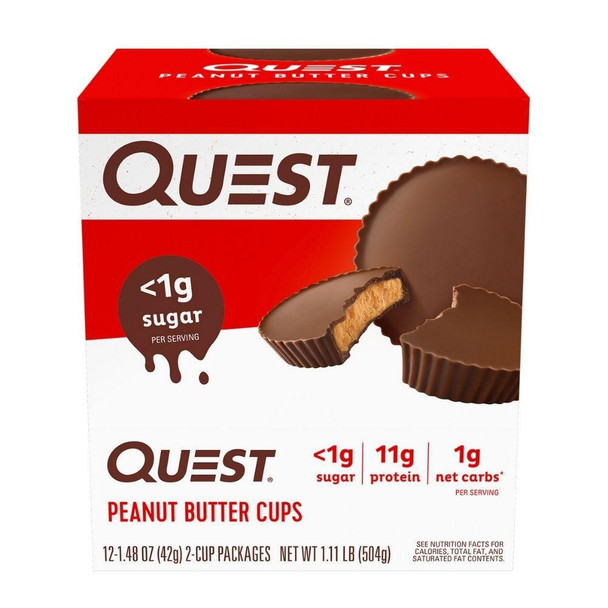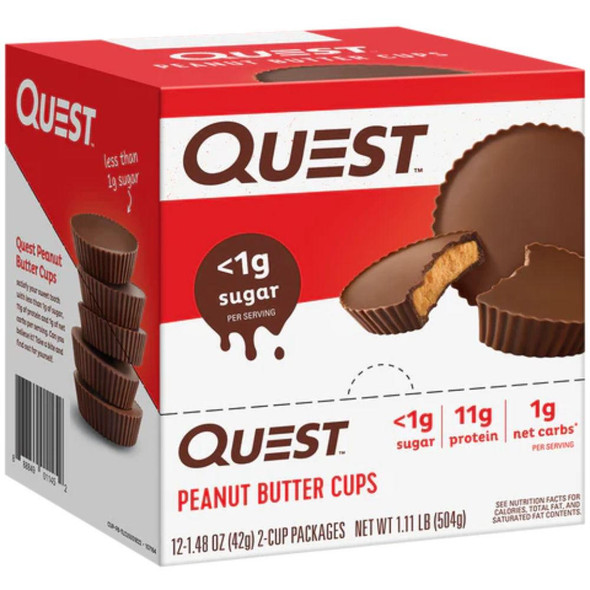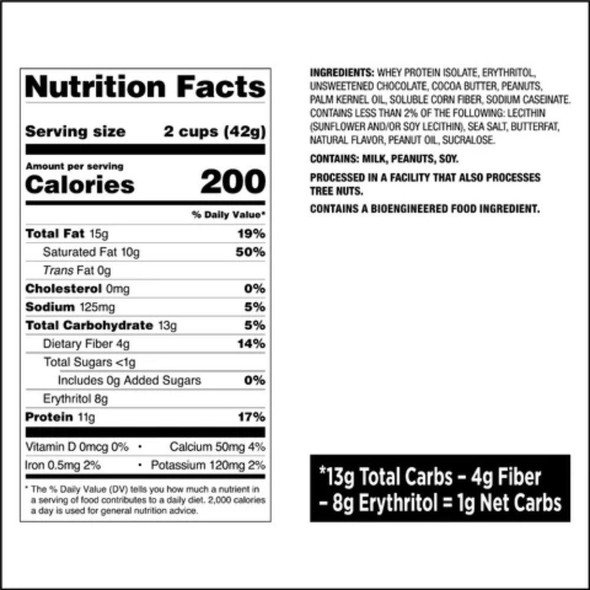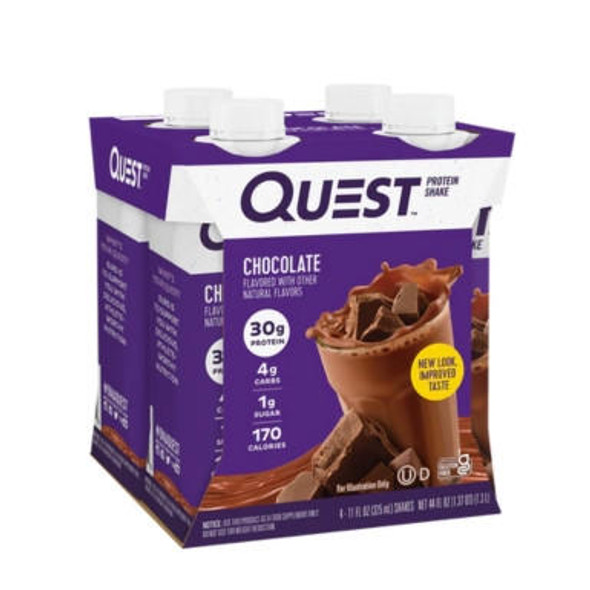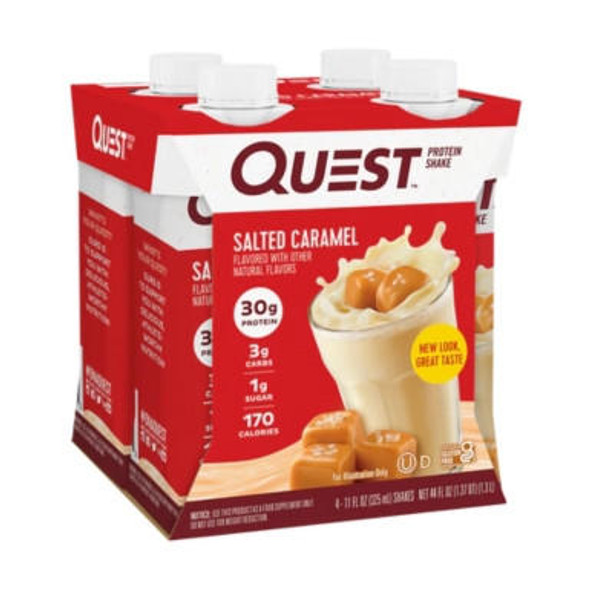Quest Peanut Butter Cups 12/packs
Quest Nutrition fans may remember a product from a few years back called Quest Cravings, a Peanut Butter Cup treat which was eventually discontinued. Well good news, Quest is back with an All New Quest Peanut Butter Cup. These creamy peanut butter cups will satisfy your sweet tooth while giving you 11 grams of protein, and all with less than a gram of sugar and only 1 net carb.
Quest Peanut Butter Cups Product Highlights
- 11 Grams Protein Per Serving
- Satisfy Your Sweet Tooth without Destroying Your Diet
- Less Than 1 Gram Sugar
- Only 1 Gram Net Carb Per Serving
- Creamy Texture & Delicious Taste
Quest Nutrition Peanut Butter Cup Customer Reviews
Typically functional foods and "healthy" foods trying to replicate junk food tend to have a different and sometimes "off" taste to them. Not hte case with these, much better than expected! These Quest Peanut Butter Cups are just as delicious and satisfying as the real thing, no protein taste, no chemical taste, no weird aftertaste. I'd highly recommend them!
Reece's Peanut Butter What? I no longer have any excuses to eat candy. While I personally don't care for Quest Bars and find them to be chalky, Quest really nailed this one with the Quest Peanut Butter Cups. I love them.
It's hard to mess up Peanut Butter and Chocolate, but hats off to Quest, they really nailed it with this one!
Directions
Just open and enjoy. A serving size is 2 cups.
Quest Peanut Butter Cups 12/Pack Supplement Facts
Serving Size: 2 Cups
Calories 190
Total Fat 15g
Saturated Fat 9g
Trans Fat 0g
Cholesterol 0mg
Sodium 125mg
Total Carbohydrate 13g
Dietary Fiber 4g
Total Sugars <1g
Includes 0g Added Sugars
Erythritol 8g
Protein 11g
Vitamin D 0mcg
Calcium 50mg
Iron 0.5mg
Potassium 120mg
*The % Daily Value tells you how much of a nutrient in a serving of food contributes to a daily diet. 2,000 calories a day is used for general nutrition purposes.
Ingredients: whey protein isolate, erythritol, unsweetened chocolate, cocoa butter, peanuts, palm kernel oil, soluble corn fiber, sodium caseinate, contains less than 2% of the following: sunflower lecithin, sea salt, butterfat, natural falvor, peanut oil, sucralose
Warnings
This product contains peanuts.
References
Tanskanen MM, Westerterp KR, Uusitalo AL, et al. Effects of easy-to-use protein-rich energy bar on energy balance, physical activity and performance during 8 days of sustained physical exertion. PLoS One. 2012;7(10):e47771. doi:10.1371/journal.pone.0047771
https://www.ncbi.nlm.nih.gov/pmc/articles/PMC3475712/
†We make every effort to ensure that the product images displayed on our website faithfully represent what you will receive. However, we recognize that digital representations can sometimes fall short of capturing every nuance of the product's physical attributes. Differences in color, size, and packaging details might exist. To mitigate this, we advise our valued customers to delve into the product descriptions where the specific features, ingredients, and usage instructions of each product are meticulously outlined. This approach helps bridge the gap between expectation and reality, ensuring you are fully informed about your purchase.
†These statements have not been evaluated by the Food and Drug Administration. This product is not intended to treat, cure, diagnose, or prevent any disease.
†California Proposition 65 Notice: Some of our products may carry a California Proposition 65 warning because they contain trace amounts of chemicals listed by the State of California as known to cause cancer, birth defects or other reproductive harm. This law is a “right-to-know” requirement and does not necessarily mean the product is unsafe or in violation of any safety standard. We rely on the product manufacturer’s instruction for these warnings; as a retailer we do not perform individual safety testing. If you have questions, please contact the manufacturer directly or consult a qualified healthcare professional.

